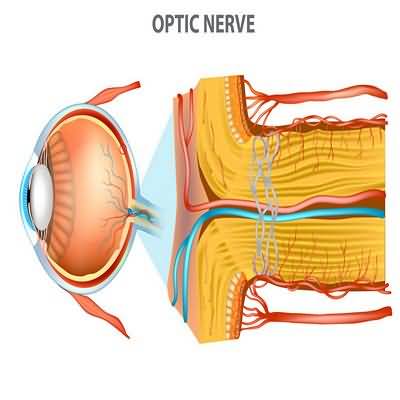Inflammatory optic neuropathy
Inflammatory optic neuropathy
OPTIC NEURITIS ESSENTIALS OF DIAGNOSIS
General Considerations
Inflammatory optic neuropathy is strongly associated with demyelinating disease (typical optic neuritis), particularly multiple sclerosis but also acute disseminated encephalomyelitisIt also occurs in sarcoidosis; in neuromyelitis optica spectrum disorder, which is characterized by serum CHapTER 7 200 CMDT 2019 antibodies to aquaporin-4; in association with serum antibodies to myelin oligodendrocyte glycoprotein; following viral infection (usually in children); in varicella zoster virus infection; in various autoimmune disorders, particularly systemic lupus erythematosus and Sjögren syndrome; during treatment with biologics; and by spread of inflammation from the meninges, orbital tissues, or paranasal sinuses
Clinical Findings
Optic neuritis in demyelinating disease is characterized by unilateral loss of vision developing over a few daysVisual acuity ranges from 20/30 (6/9) to no perception of light, with more severe visual loss being associated with low serum vitamin D
In almost all cases there is pain behind the eye, exacerbated by eye movements
Field loss is usually central
There is particular loss of color vision and a relative afferent pupillary defect
In about two-thirds of cases, the optic nerve is normal during the acute stage (retrobul- bar optic neuritis)
In the remainder, the optic disk is swollen (papillitis) with occasional flame-shaped peripapillary hemorrhages
Visual acuity usually improves within 2–3 weeks and returns to 20/40 (6/12) or better in 95% of previously unaffected eyes
Optic atrophy subsequently develops if there has been damage to sufficient optic nerve fibers
Any patient with presumed demyelinating optic neuritis in which visual recovery does not occur or there are other atypical features, including continuing deterioration of vision or persisting pain after 2 weeks, should undergo further investigation, including MRI of the head and orbits to exclude a lesion compressing the optic nerve and to identify atypical optic neuritis
Treatment
In acute demyelinating optic neuritis, intravenous methylprednisolone (1 g daily for 3 days followed by a tapering course of oral prednisolone) has been shown to accelerate visual recovery, although in clinical practice, the oral taper is not often prescribed and oral methylprednisolone may be usedUse in an individual patient is determined by the degree of visual loss, the state of the fellow eye, and the patient’s visual requirements
Phenytoin and amiloride may be neuroprotective in typical optic neuritis
Atypical optic neuritis due to sarcoidosis, neuromyelitis optica, herpes zoster, or systemic lupus erythematosus generally has a poorer prognosis, requires immediate and more prolonged corticosteroid therapy, may require plasma exchange, and may necessitate long-term immunosuppression
Prognosis
Among patients with a first episode of clinically isolated optic neuritis, multiple sclerosis will develop in 50% within 15 years but the visual and neurologic prognoses are goodThe major risk factors are female sex and multiple white matter lesions on brain MRI
Many disease modifying drugs are available to reduce the risk of further neurologic episodes and potentially the accumulation of disability but each has adverse effects that in some instances are life-threatening
Fingolimod is associated with macular edema
Retinal nerve fiber layer optical coherence tomography quantifies axonal damage that can be used to monitor disease progression
When to Refer
All patients with optic neuritis should be referred urgently for ophthalmologic or neurologic assessment

















